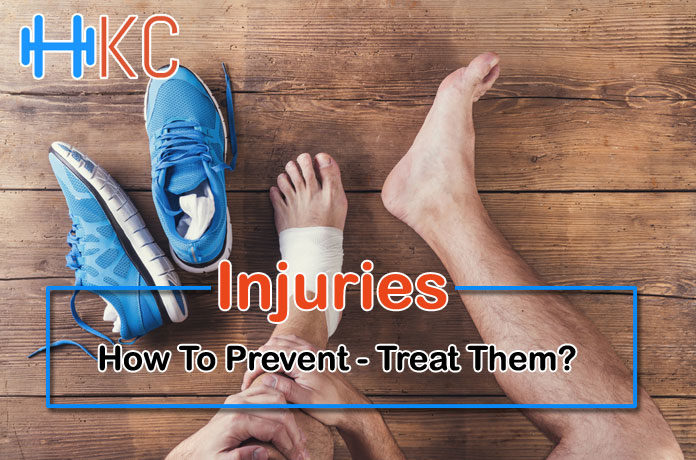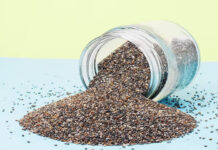Injuries: How To Prevent – Treat Them?
Being active is an important part of our everyday lives in order to become/stay healthy, among other benefits. For many people, engaging in sports is a fun way of staying active and getting fit. Other than amateur sports others participate in professional sports, which makes it part and parcel of their lives. While the benefits of exercise and sports far outweigh their risks, injuries are bound to happen from time to time. This can affect anyone who’s active despite your fitness level; in fact, even walking can cause injury. The good news is many of these injuries are preventable while most are mild and respond well to simple treatments at home. This text will highlight everything you need to know about injuries, including how to prevent and treat them.
Causes
Most injuries are mainly caused by accidents, but they can also be due to poor nutrition, dehydration, lack of concentration, environmental constraints, overexertion, poor training, poor technique, using incorrect equipment, and much more. Sports injuries are mainly categorized into two: acute traumatic injuries, which are injuries that occur suddenly after a force or blow to your muscles and include sprains and strains, fractures, cuts, and concussions; as well as overuse injuries (chronic injuries), which are injuries that occur over time due to repeated overuse of the muscles and joints such as tendinitis and stress fractures. Structural abnormalities and poor technique can also contribute to overuse injuries.
Types of Injuries
People expose themselves to all kinds of injuries whenever they do sports or work out. Some of the common injuries you should watch out for include ankle sprain, runner’s knee, concussion, shoulder injury, Achilles tendinitis, tennis elbow, dislocation, hamstring strain, stress fractures, nose injuries, muscle cramps, bruises, cuts and abrasions, groin strain, shin splints, dental damage, lower back pain, and so on. These injuries mostly affect the musculoskeletal system, including the bones, muscles, as well as tissues such as cartilage, ligaments, and tendons.
Prevention
The best way to avoid injuries is to learn about the correct and safe ways to engage in your activity. There are several simple steps you can take to reduce the chances of an injury. For starters:
Warm-Up & Stretching Are Important
Every physical activity should begin with a gentle warm-up to get the body prepared for exercise. This increases blood flow to the muscles while slowly increasing your heart rate, and gradually loosens your muscles and joints to make you more flexible. A cool down after a sporting activity is equally important to gradually bring your heart rate back to normal. Remember to stretch after a warm up and cool down to increase flexibility.
Stay Hydrated
Getting enough water before, during, and after an exercise is a must, to replace fluids lost through sweat. Water lubricates your joints to prevent muscle fatigue and regulates body temperature. The amount of water you should take will depend on climatic conditions, the intensity of your workout, duration, clothing, your health, and so on. Be sure to have a small meal or snack 2-3 hours before your activity to help fuel the body, and a protein and carb snack afterwards to replenish your energy stores.
Stay Active
Consistency is the key to staying fit and minimizing injuries. For those in professional sports, it’s important to do some pre-participation training before the main activity. While it’s important to lightly exercise the relevant muscles, it also helps to do some cross training to avoid overusing one set of muscles, which in turn prevents overuse injuries.
Dress Appropriately
Having proper equipment, including clothing, footwear, and protective gear can help reduce your risk of injury. The right gear will vary depending on your sport.
Don’t Overdo It
Try not to push yourself too hard. Fatigue often impairs concentration, which can lead to a misstep or fall. Muscle fatigue also takes away all your protective mechanisms, increasing your risk of all injuries. When you’re first getting into shape, you should start with cardiovascular exercises and strength training to build strength and stamina.
Inspect the Area
Check your surrounding environment for any debris, holes, sharp objects, or anything that could increase your risk of injury.
Treatment
Your next line of defense if prevention fails should be early detection. Most of these injuries feel the same but they do produce different symptoms and complications if left untreated. Some of the common symptoms include a bit of soreness, swelling, stiffness, bruising, warmth-to-the-touch, and redness. Minor injuries can be treated at home using the PRICE therapy method, which stands for: Protect injured tissues from further injury, Rest to give injured tissues time to heal, Ice the injury to lessen inflammation and bleeding, use a compression bandage to apply pressure on the injured areas to reduce swelling and inflammation, and lastly, Elevate the injury to reduce swelling. If the injury looks or feels severe, seek medical attention as fast as possible. You should also seek emergency care if you experience prolonged or severe swelling and pain, diminished strength or mobility, skin discoloration, loss of consciousness, and short term memory loss.
A major injury can suddenly disrupt your entire life. Stay protected against financial loss with Personal Accident Insurance. This policy covers permanent disability, medical expenses, temporary total disablement, and funeral expenses among other things as a result of an accident. This cover can be taken as a standalone or as an optional rider in car or life insurance policies.
Getting Well
The primary concern of an injured person is how they can speed up the healing process and get back into their routine. The first step should be to take an active rest. This helps to minimize the effects of an injury, allow the injured part to return to normal motion, keep non-injured muscles active, and maintain cardiovascular fitness. The next step is reconditioning your injured muscle or joint, which involves correcting the effects of an injury through stretching, body awareness, and strengthening training. After developing some basic level of conditioning, you need to gradually train your body to do sports-related movements such as sprinting, agility drills, and jumping. Anti-inflammatory drugs can also help ease pain, swelling, and inflammation. Be sure to check ask your doctor before using them though.
The Mental Part
While most injuries range from mild to moderate, some can be quite severe that they not only cause physical pain but also impose a substantial mental burden. With most people depending on sports and exercise as their emotional outlet, poor psychological response to an injury can easily trigger serious mental health issues like anxiety, substance use/abuse, depression, or an eating disorder. Those participating in professional sports suffer the most psychological effects of an injury. They often experience loss of identity, fear of re-injury, the pressure to get back quickly, decreased confidence, and fear of losing their role in the team. The truth is physical activity leaves you feeling tired but better mentally. The mental part of injury must be handled with care to help you have a successful return to your favorite sport. Seek counseling to find ways to better cope with the emotions associated with an injury. During recovery, you need to find something that you can direct your energies to. It can be anything from cooking to learning a musical instrument, or playing virtual games; basically, anything that offers what the sport used to for you. This will get your mind off the injury and the difficulty of recovery, as well as boost how you feel about yourself.














